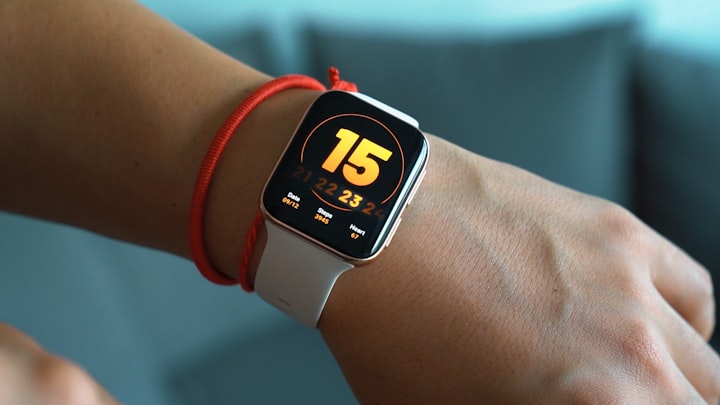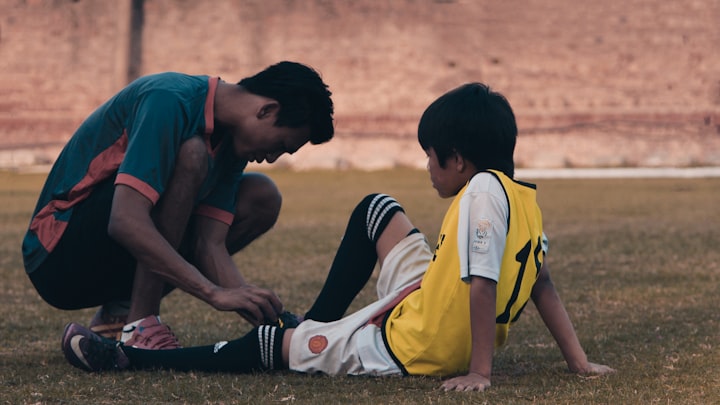What Do You Need The Most In Your Running? Technology Alone? or Are There Other Elements?
With technologies advancing so much in sports, are those enough or do we need to pay attention to other elements?

"I ran a 10K race on the weekend. It was awesome."
"Oh, great. Congratulations. How much time did you take to do that?"
While looking into the GPS watch, "Well, I wanted to finish it in under 50 minutes. But you know, something happened during the run, and I could not just do it. I could do it in 52 minutes."
These are the typical conversations among the most recreational runners post races that they participate. Of course, everyone looks forward to improving their race timings for different distances as it adds a certain amount of zeal to our running accomplishments. Some of us improve our timing, and some of us go longer distances. And then, there are people who improve both distance and timing goals. Everything is possible.
Technology has come in to help, like never before, in these aspirations. You have wristwatches to measure every damn thing that you need to take you towards your running goals - Heart Rate, Cadence, VO2 Max, Distance, Pace, and whatnot. While there are discrepancies in how they accurately measure these data (GPS watch with a chest strap, measures heart rate better vs. a wrist-based GPS watch, as an example), we can use any of them based on our needs.
When it comes to deciding how much technology help you need in the sport of running, it largely depends on your individual specific goal. There is nothing like this way or that way. Once you decide on your running goals, technology can come in to help.
For example, if you are trying to improve running turnover (aka cadence), you can baseline the same using a GPS watch or a metronome on one of your easy runs. The ideal recommended turnover for any runner is 180 per minute. What this does is it ensures your feet don't spend a lot of time on the ground for each of your strikes and you don't over-stride - both come in handy to ensure your overall running form gets better with reduced injury conditions. Over-striding means landing your foot in front of your body vs. landing it under your body.
Similarly, if you plan to improve your pace, you could do speed workouts such as interval runs. You could use your GPS watches to set targets for running segments and rest in-between.
On the other hand, if you are working to lose weight which demands a lot of work with the dieting apart from exercise routines. There are mobile applications available that can track every single food item that you intake by calories. That way, people are given programs to follow. They record data as they consume food of all types, and those data help adjust the diet further to get the best-expected results.
Yes, technology is there to help. But is that all to it? Are there more elements that we should pay attention to as we work to achieve our running goals?
Let's take a quick look at them. We may not cover all of it in this article, but let's take a stab at the critical ones.
Rate of Perceived Exertion: While on one side, we use wristwatches to tell us our heart-rate zones as we work through our running activity, there is also a thing called "Rate of Perceived Exertion" aka RPE. As you do your activity, you pay attention to how you are feeling overall. How is your breathing, are those getting heavier, is the muscle fatigue setting in, are you sweating more, is the heart rate increasing, and such things. There is a scale of 1 to 10 to measure how you feel overall based on RPE. 1 being the easiest feeling vs. 10 being the extremely fatiguing and burning out state. The takeaway is to pay attention to how you feel vs. solely depending on what the watches and the other gadgets tell you. Many coaches guide their talents using this approach across the globe as the talent continues to improve performance.
Importance of Rest Days and Adequate Resting: We all have training plans in place, and we push ourselves to execute them because they are out there. We feel guilt if we cannot carry out our planned activities. Yes, while discipline and not being a slacker are highly important, it is also significant not to beat yourself up against the goals that you have set in. It is utterly fine to take a break despite having a scheduled training on a few days, especially when other higher priorities of your life have taken more out of you in terms of time and energy. Always remember this - As a recreational runner, achieving your personal running goals in 4 vs. 6 months is not going to make an enormous difference in the long term. Yes, if you are working on competitive races, your mindset and the way of working may be different. The competitive race objective should take higher priority over other life priorities. We never have to look at anyone else when we are working on our own goals. Everyone's life and priorities are very different. So resting enough and rest days are crucial to get the best at your running goals. You don't want to burn out and feel fatigued as you work on your goals. Celebrate the joyfulness as you work through them.
Preventing Injury Symptoms: As you train for your running goals, you may sense early about an injury that is about to get worse. When you come across such situations, be more responsible for yourself and say NO to hard training (a high demanding interval run or a long-distance run), even if that means achieving your goal is going to take a bit longer. After all, most recreational runners are starting to run to improve their health and wellness. But over the years, they are getting carried away inadvertently to bad states with severe injury or burnout conditions. What good is it to stay injured for long and lose health and wellness in the face of your running goals? So, always try to stay injury-free as you work through them.
Summary:
We have all elements coming together in helping us achieve our running goals. While technologies are helping us with numbers, we all need to improve our sensing abilities as we train. Restfulness, respecting our body, staying injury-free, training by feeling, and especially the spirit of being a holistic runner who would always know what is valuable in being a runner, in being able to run lifelong as you achieve your running goals.
If you liked my article, please subscribe. Also, do not forget to leave a heart! Thank You.
You can also buy my book on running, written to inspire all aspiring runners to pick running and help seasoned runners to improve their running towards holistic wellness - Be a Runner Forever - How to Become and Be an Inspired Holistic Runner
Visit Runner-Forever to learn more!
Join Runner-Forever Facebook Group and Runner-Forever Facebook Page, if you are keen to learn more about inspired holistic running and be able to interact with other runners who are on the similar wellness journey.
About the Creator
Ganesh Kuduva
LinkedIn Top Voice | Founder - Runner Forever | Health & Wellness Coach | Author of BE A RUNNER FOREVER (Available on Amazon) | Corporate H&W Speaker | Follow me for posts on Health and Life Skills (www.runner-forever.com)






Comments
There are no comments for this story
Be the first to respond and start the conversation.